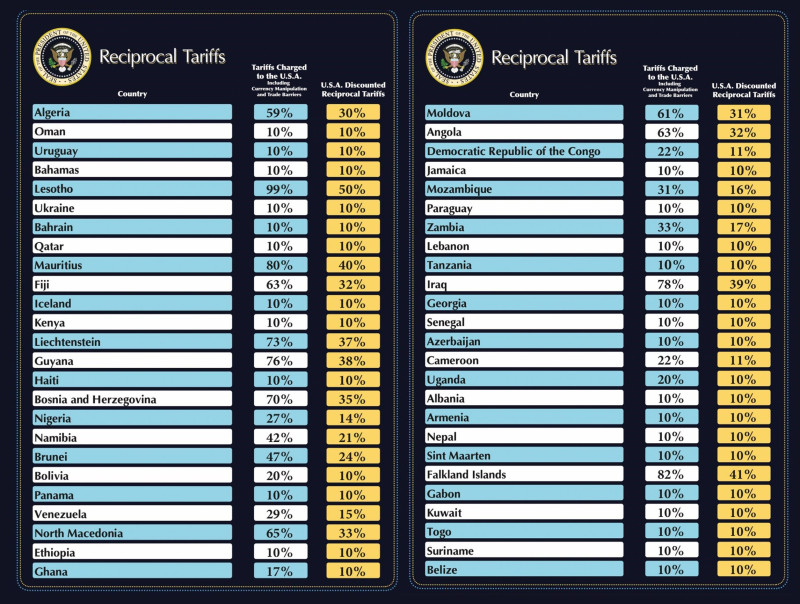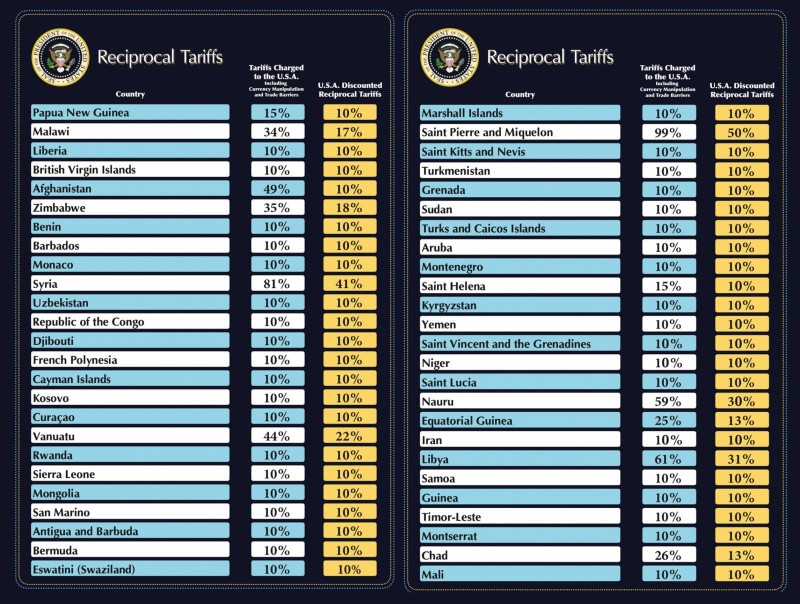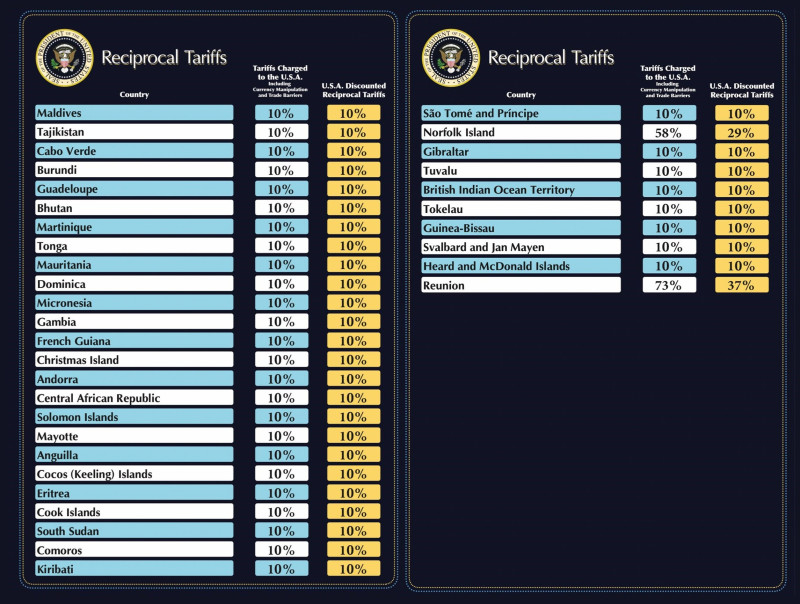American journalist states that he discovered the answer – many countries argue that numbers have nothing to do with reality
Many people wonder how the Trump government has identified the amount of duties it has imposed, while many countries argue that numbers do not have No relation to reality.
According to the Guardian, New Zealand Trade Minister insisted that his country did not implement a 20% duty on US imports, as Washington argues, while Australian Prime Minister Anthony Albanese stressed that US duties said. ‘They are not based on logic’ And that “on a mutual basis the duties would be zero, not 10%.
An American journalist, known for his financial analyzes, says he discovered the answer and analysts estimate that he is likely to be right.
“In fact, they did not calculate tariff rates + non -tariff barriers, as they say they did. On the contrary, for each country, they simply got our commercial deficit (US) with this country, and divided it with the country’s exports to us. “ Economic writer James Saroviek wrote in a post on X.
“So we have a commercial deficit of $ 17.9 billion. dollars with Indonesia. Its exports to us are $ 28 billion. $ 17.9 / $ 28 = 64%, which Trump claims to be the amount of duty imposed by Indonesia. “
The number was divided by half (32%), as Trump said he was “kind”. He also argued that duties are included “Currency manipulation and commercial barriers”.
An explanation of the calculations made and later published in the office of the US Commercial Representative appeared to confirm that the US administration had used commercial deficits divided by imports.
Mike O ‘Rourk, head of Marketing Strategy at Jones Trading, told CNN that while these new tariff measures have been framed as’ reciprocal’, it turns out that politics is actually one one surplus targeting policy …
Duties do not appear to be used to calculate the factor. The Trump government targets specifically nations With large trade surpluses with the United States in relation to their exports to the US.
In detail, the Trump government imposed extensive duties:
- 20% on imports from the European Union
- 26% on imports from India
- 25% on imports from South Korea
- 24% on imports from Japan
- 32% in Imports by Taiwan
- 10% on imports from the UK
- 46% on imports from Vietnam
- 31% in imports from Switzerland
- 49% in Imports from Cambodia
- 32% on imports from Indonesia
- 34% in imports from China
- 36% in imports from Thailand
- 24% in Malaysia Imports
- 30% on imports from South Africa
- 10% on imports from Brazil
- 37% on imports from Bangladeshi
- 10% on imports from Singapore
- 17% on imports from Israel
- 17% on imports from the Philippines
- 10% in imports from Chile
- 10% on imports from Australia
- 29% on imports from Pakistan
- 10% on imports from Turkey
- 44% in imports from Sri Lanka
- 10% on imports from Colombia
Source: Skai
I am Janice Wiggins, and I am an author at News Bulletin 247, and I mostly cover economy news. I have a lot of experience in this field, and I know how to get the information that people need. I am a very reliable source, and I always make sure that my readers can trust me.













